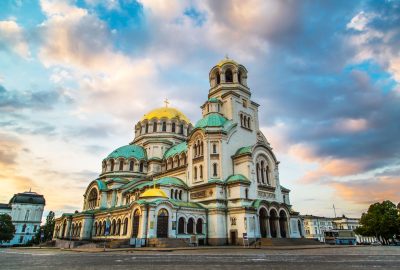It’s been a while since I heard someone asking about “Internet cafes” in 21st century Europe. Bulgaria is a bit behind in development, especially compared to other members of the Union. But it’s catching up quickly, rapidly even as you can see in its capital Sofia, which went through a lot of renovation works and new construction projects lately. Statistics claim that 6 Bulgarians become millionaires every month. They’re still one of the poorest countries, with the lowest salaries, but they’re on the verge of joining the Schengen and Eurozone as soon as possible. Also known as “the Silicon Valley of Eastern Bloc”, Bulgaria is becoming a major partner for companies looking to outsource their workforce, alongside China and India. Giants like Google, Facebook and Apple are fighting for office space in the capital Sofia. That’s quite impressive for a country that suffered under Turkish enslavement for 500 years, enjoyed their freedom for a short while, just to end up a part of the Eastern Bloc, behind the Iron Curtain until early 90’s. Even during those times, Bulgaria was a major middle-class tourist destination. The Golden Sands are the prime resort in these parts. It’s usually crowded by an international mix of people that like to strike a bargain when shopping for all-inclusive holiday deals. Gorgeous, sandy beaches, the Black Sea, prestigious hotels and golf clubs are just a part of what the Golden Sands have to offer. A national park under the same name encircles the resort; those lush forests were mentioned in adventures of the mythical Argonauts.

The most eye-catching building of Sofia: St. Alexander Nevsky Cathedral, a Bulgarian Orthodox cathedral, built in Neo-Byzantine style
Bulgarians can also take pride in their mountain resorts, such as Borovets, located on the northern slopes of Rila Mountain, just 70km outside of the capital Sofia. The same Rila Mountain that’s known for the Rila Monastery, a refuge for tourists and pilgrims. A beautiful bell tower and church stand in the middle of the site both covered in comic book-like frescos. Bulgaria’s patron Saint John (Ivan) has been buried in a tomb nearby, making it an even more symbolic destination. Religion is one thing that all the Slavic nations have in common; love for alcohol is another. They call it Rakiya, but it’s basically horrid moonshine made from anything they could get their hands like grapes, plums or apricots. Bulgarians drink it lukewarm, accompanied by (dry) fruit; I was told to snack on grapes while drinking it, but it didn’t make it any better. My friends’ dad had a habit of burying caskets of Rakiya in their garden for “special occasions”. Personally I don’t think the aging did it any good. Some Bulgarian Christians even use it in their religious rituals, instead of wine, which is weird.
Sofia is quickly becoming one of the most fresh and vibrant European capitals. It’s also one of the oldest. Established by the Thracians, later cultivated by the Romans, as an important part of the empire. Only recently it became the capital when the Turks got pushed back with help of the Russians in the year 1879. That started a long-lasting friendship between those two nations; Russians probably seemed like a peachy bunch, compared to those 500 years of brutal Turkish occupation. The gigantic Alexander Nevsky Cathedral stands to commemorate those events. Some of those Soviet monuments and sculptures have been kept but most of the stuff had been relocated to the Museum of Socialist Art. At that venue people can still witness it, but it’s not forced down their throats around every corner.

The church St.Cyril and Methodius in Sofia is devoted to the Cyril and Methodius brothers (creators of Slavic alphabet)
Bulgaria stands on top of over 220 mineral springs and Sofia is no different. Those waters are warm and filled with mineral goodness, it’s nothing like the famed Japanese hot springs, but people still praise the healing and relaxing properties of baths such as Central Mineral Baths and fountains spread around the city. Lines of people stand in wait to get their share of the delicious tonic. The most amazing thing in Sofia, at least for me, are the Roman ruins of ancient Serdica, casually implemented into the cityscape. You walk out of the subway and there’s a McDonalds to your left and remains of a Roman city from AD 29 to your right.



No one commented yet. Be the first.